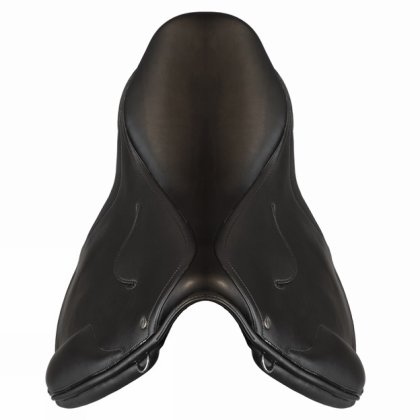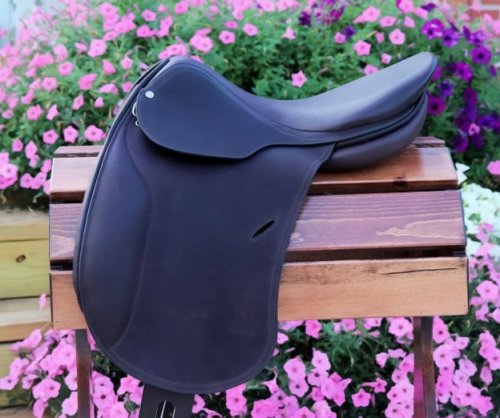Saddle Fitting Precision
Saddle Fitting
Precision
Equine Ergonomics
Fitting the motion
Part 2 Precision
This short videoclip is part of a much longer document, “Half Pass, A Dynamic Perspective,” explaining the interaction of forces occurring between the rider and the horse during the practice of half-Pass.
The point here is to illustrate that the practice of half-Pass, as well as any dressage movement, is a continual conversation, a permanent interaction of forces between the rider and the horse. The red arrows illustrate the forces perceived by the ride’s upper thighs and calves. Feedback correction, 0,8 of a second, is too slow. The dialogue does not occur at the of obedience to the aids. The rider adjusts his own tensegrity to the horse’s tensegrity and the forces coming from the horse are channeled in the proper direction through subtle adjustments, either maintaining the same tensegrity or subtle nuances in muscle tone.
Lateral bending of the horse’s thoracic spine, as well as its associated rotation, occurs between the rider’s upper thighs. The efficiency and precision of the dynamic conversation between the horse and the rider demands a saddle allowing stable and study contact of the rider’s upper thighs. The design of the Macel Samba as well as the Samba S, allows the necessary stability and precision.

The monoflap design allows a precise contact and nuances of the rider’s calves, 
This short video is part of a longer video, “Half Pass, a Dynamic Perspective,” Where each frame which composes this video is explained, describing the forces generated by the horse’s physique and perceived by the rider’s physique.
Driving seat, obedience to the aids, is an equitation of gestures based on the belief that muscles elongate and shorten to flex and extend the joints. This is archaic. Most of the length change required for the work of locomotion and performances does not occur in the muscle fibers themselves but by elastic recoil of associated tendons and muscles aponeurosis. Muscles absorb energy, work in complex network with the help of fascia. The stimulus response theory that has the equitation of our ancestors is replaced by the concept of tensegrity, elastic energy, nuances in muscle tone which demands the integrity of the rider’s physique.
Riding is a sophisticated interaction of forces between the horse and the rider. This short video illustrates how the horse and the rider dialogue through subtle nuances in muscle tone. The subject of the conversation is left half pass. We are talking about the gymnastic exercise developing the muscular system of the thoracic spine and the upward propulsive activity of the forelegs. As the horse searches for the body coordination allowing maximum use of his power, forces are acting on the rider’s body. They are filtered, resisted or redirected through subtle nuances of the rider’s muscle tone. There are no gestures or shifts of the rider’s weight. The conversation occurs at the level of nuances in muscle tone. Both physiques, the horse and the rider, are tuned to the same tensegrity and discuss through sophisticated nuances. It is the lightness and harmony hinted in our ancestor’s wisdom but achieved through a conversation upgraded to actual knowledge.
Contact Helyn@scienceofmotion.com
or
Jean Luc, Chazot44@gmail.com
Science Of Motion ®
Scienceofmotion.com


